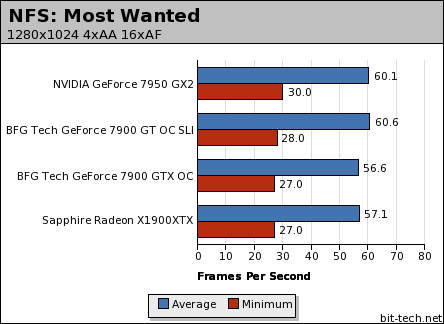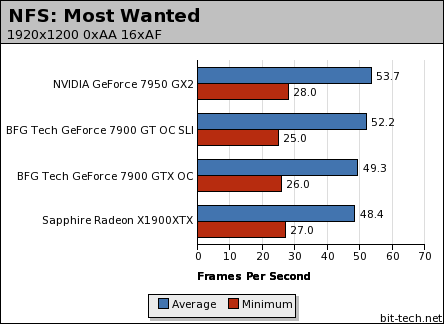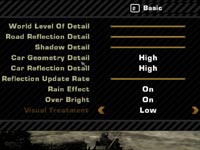
Need For Speed: Most Wanted:
Publisher: Electronic ArtsWe used the full retail version of Need For Speed: Most Wanted patched to version 1.3. It's the latest addition to Electronic Arts' popular Need For Speed franchise. The game makes use of shaders everywhere, with realistic car reflections, a dynamic sky making use of HDR bloom and also weather patterns that change during the game. Most of the game takes place in the daytime, so aliasing is much more noticeable than it was in previous versions of the Need For Speed: Underground sub-franchise - antialiasing is preferred over a higher resolution in order to combat the edge aliasing.
There is a new setting called Visual Treatment which - when set to high - leaves a bright glow on most objects that get in the way of the sunlight. We feel this looks slightly unrealistic as the effect is over-used to an extent and it's best left set to the low setting with overbright enabled. Along with this, there's also the fact that the high setting causes a big performance drop, giving yet another arguement for leaving it on the lower setting.
We did a manual run through of the Hwy 2001 sprint track that lasts for around 4 minutes. This is sufficient time to experience the rain effect and normal weather conditions in the same run through. The track gives a good idea of what NFS: Most Wanted will perform like on any card, as it goes around most regions in the NFS world. We tested at three resolutions with maximum details to compare the cards in an apples to apples format.




MSI MPG Velox 100R Chassis Review
October 14 2021 | 15:04









Want to comment? Please log in.